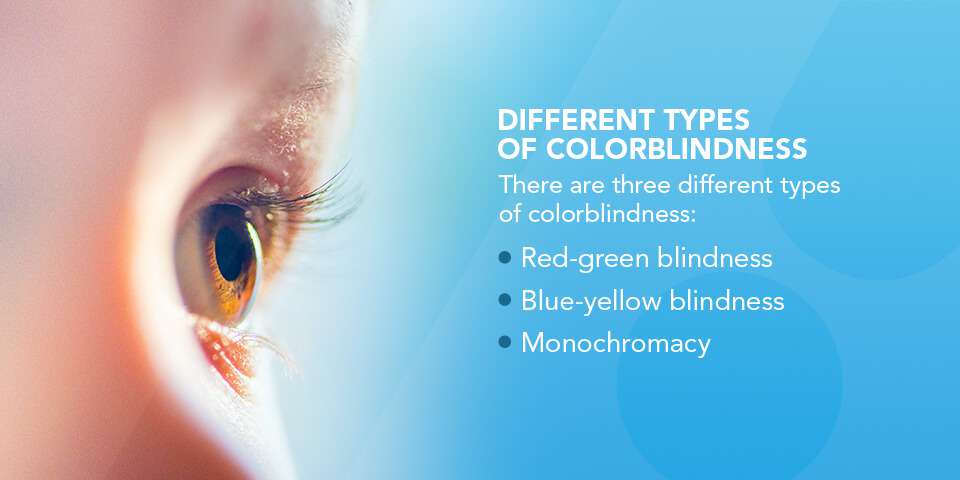Different Types of Colorblindness
The most common cause of colorblindness is genetics. Most people with the condition are born with it and live with it their entire lives. Occasionally, colorblindness can occur later in life due to eye or brain trauma, medications, or even diabetes. There are three different types of colorblindness:
- Red-green blindness: Red-green colorblindness is the most common form, affecting more than 90% of people who are colorblind. There are four subtypes of this version of colorblindness — protanomaly makes red look green, deuteranomaly makes green look red, and both protanopia and deuteranopia make the colors indistinguishable.
- Blue-yellow blindness: Blue-yellow colorblindness affects the ability to distinguish a range of colors. It also has subtypes. Tritanomaly makes blue and green look alike and yellow and red look alike. Tritanopia makes blue and green, yellow and pink, and purple and red look similar.
- Monochromacy: Monochromacy is also known as complete colorblindness. It's the least common form, leaving the person unable to see any color at all.
How Colorblindness Can Affect Your Business
So, how does a colorblind person learn colors? Some people who are colorblind learn to differentiate shades and use context clues, but there's no cure for the condition. The closest they may get to seeing the full range of colors is through special glasses or contact lenses.
If you want your business to appeal to the widest range of people, that includes those who are colorblind. Rethink how you use color in your marketing and how different customer segments will react to certain color combinations.
If you yourself are colorblind, it may be helpful to invest in tools that help you use the full scope of colors at your disposal.



